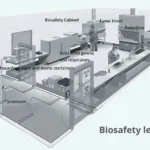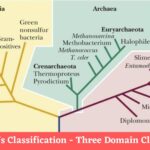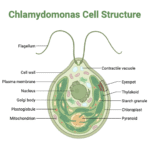Answered
An animal cell has several key components and structures that work together to maintain its functions and support the life of the organism. Here is an overview of what an animal cell contains:
Major Components of an Animal Cell
- Nucleus
- Function: Contains genetic material (DNA) and controls cellular activities such as growth, metabolism, and reproduction.
- Structure: Enclosed by a nuclear envelope with nuclear pores that regulate the exchange of materials between the nucleus and cytoplasm.
- Plasma Membrane
- Function: Acts as a selective barrier that controls the entry and exit of substances, maintaining cellular homeostasis.
- Structure: A phospholipid bilayer with embedded proteins.
- Cytoplasm
- Function: A gel-like substance where cellular processes occur and organelles are suspended.
- Structure: Composed of cytosol (the fluid part) and various organelles.
- Mitochondria
- Function: Known as the “powerhouses” of the cell, they generate ATP (adenosine triphosphate) through cellular respiration.
- Structure: Double-membrane organelles with an inner membrane folded into cristae.
- Endoplasmic Reticulum (ER)
- Function: Involved in protein and lipid synthesis.
- Types:
- Rough ER: Studded with ribosomes, involved in protein synthesis and processing.
- Smooth ER: Lacks ribosomes, involved in lipid synthesis and detoxification.
- Golgi Apparatus
- Function: Modifies, sorts, and packages proteins and lipids for transport within and outside the cell.
- Structure: Composed of stacked membrane-bound sacs called cisternae.
- Lysosomes
- Function: Contain digestive enzymes that break down waste materials, cellular debris, and macromolecules.
- Structure: Membrane-bound organelles with an acidic interior.
- Centrioles
- Function: Play a crucial role in organizing microtubules during cell division and facilitating the separation of chromosomes.
- Structure: Paired cylindrical structures composed of microtubules.
- Vacuoles
- Function: Store nutrients, waste products, and help maintain turgor pressure. In animal cells, they are generally smaller than in plant cells.
- Structure: Membrane-bound sacs.
- Cytoskeleton
- Function: Provides structural support, facilitates cell movement, and aids in intracellular transport.
- Components:
- Microtubules: Hollow tubes that maintain cell shape and are involved in cell division.
- Microfilaments: Thin filaments that support the cell’s shape and enable movement.
- Intermediate Filaments: Provide mechanical strength and help anchor organelles.
Did this page help you?




